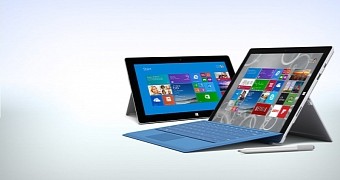Microsoft launched the very first Surface tablet in October 2012 together with Windows 8, and shortly after that, the company's community forums and other websites started reporting issues caused by what seemed to be poor drivers for the network adapter.
Many Surface RT users complained of limited Wi-Fi connectivity that occurred every once in a while, at random times, no matter what they were actually doing with the device.
Microsoft delivered several fixes at that time, and while some users said that everything went back to normal, others complained that the issues persisted on their devices. Two years and a half and nearly 10 fixes later, the Wi-Fi issues not only that are still here but they also affect more Surface models, including the very powerful Surface Pro 3.
Possible hardware issue?
First of all, it's a little bit surprising to see such a critical issue persist after more than a couple of years, no matter how hard it actually is to address it. We've received reports from users whose Surface RTs are still suffering from limited Wi-Fi connectivity, and without 3G support, they are pretty much left without an option to browse the web.
In most of the cases, users claim that their wireless connection drops all of a sudden and their devices indicate limited connectivity. Toggling Wi-Fi on and off, rebooting the device, or reinstalling the Wi-Fi adapter either makes no difference or solves the problems only temporarily.
Some customers, annoyed by the amount of time that Microsoft needs to address the problem, blamed a hardware issue for this thing and rushed to the nearest Microsoft store to replace their devices.
Microsoft, however, claimed that it was all just a software issues and firmware updates were expected to solve it, but here we are nearly one year after the launch of the Surface Pro 3, still looking for a way to address this problem.
Right now, a simple search on Google provides you with plenty of workarounds, many of which do not make any difference, so it's all up to Microsoft to fix this.
Obviously, Surface Pro 3 users whose devices are affected for this are keen on getting a patch for this, so we've contacted Microsoft for an official statement for this problem and will update the article when we get an answer.

 14 DAY TRIAL //
14 DAY TRIAL //